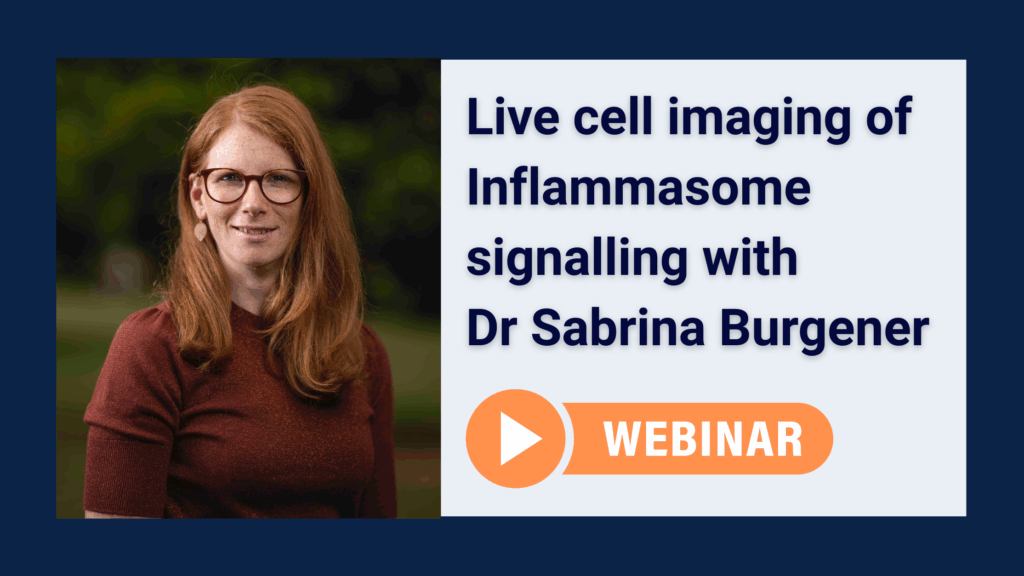Live cell imaging of Inflammasome signalling
Webinar details
Register for webinarWhen: Thursday July 3 | 1-1.30pm
The innate immune system is a critical first line of defence for humans against invading pathogens. Upon sensing homeostatic disruption, some innate immune receptors (e.g., NLRP3) induce the assembly of a cytosolic protein complex, called the “inflammasome”, to activate the protease caspase-1 (CASP1). Active CASP1 cleaves pro-inflammatory cytokines (e.g., IL-1b/IL-18) into their active, secreted forms to drive inflammation. CASP1 also cleaves gasdermin D (GSDMD) to trigger a lytic form of cell death – pyroptosis – that further potentiates inflammation. The NLRP3 inflammasome has emerged as a central regulator not only of pathogen-induced inflammation but also of sterile inflammation associated with chronic diseases.
Current technologies allow a broad-spectrum analysis of inflammasome signalling outputs, such as measuring the formation of ASC-speck (inflammasome complex), the secretion of active IL-1b or IL-18, as well as the cleavage of gasdermin D and resultant cell death. However, inflammasome activation and signalling outputs are a continuum over time, and current technologies rely on single endpoint measurements. The Agilent BioTek Cytation allowed them to establish a high-throughput screen of inflammasome activation over time. In this talk, Sabrina will showcase some of our newly standard assays to assess inflammasome activation.
Dr Sabrina Burgener is the Deputy Lab Head of the Inflammasome Group of Prof. Kate Schroder at the Institute for Molecular Bioscience at the University of Queensland.
Her research program comprehensively defines how inflammasome signalling is controlled within a cell to an organismal level to drive disease. Her work seamlessly integrates discovery research with clinically relevant viewpoints.
